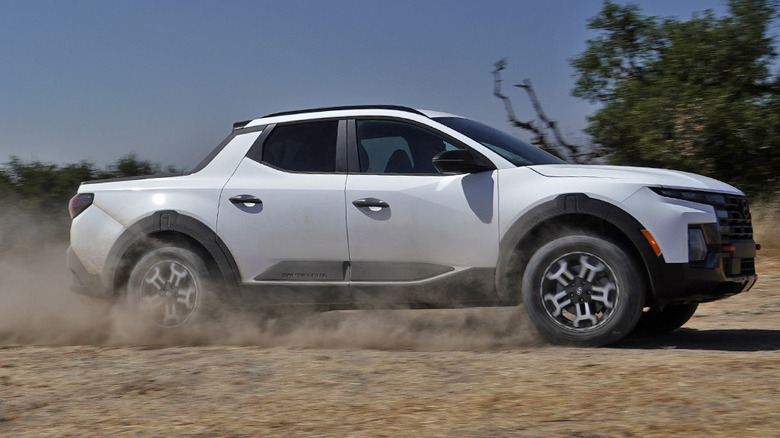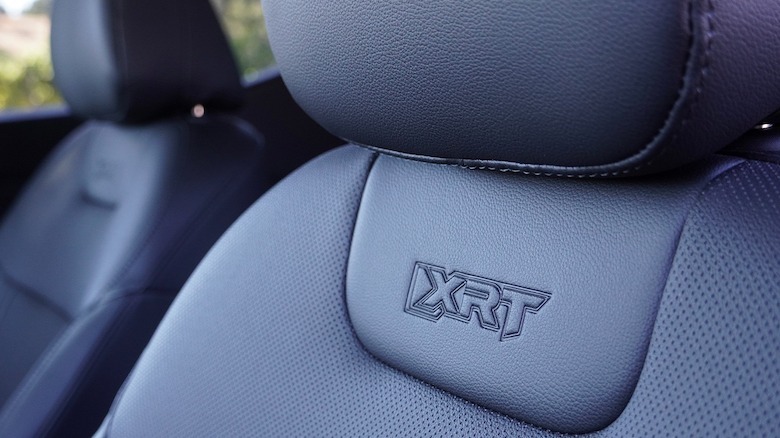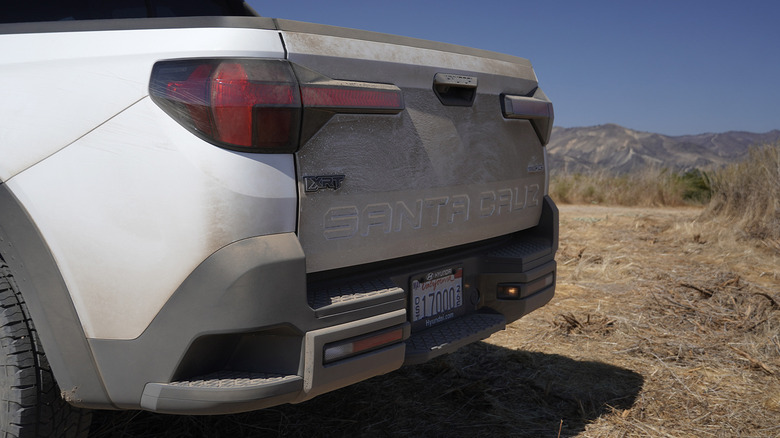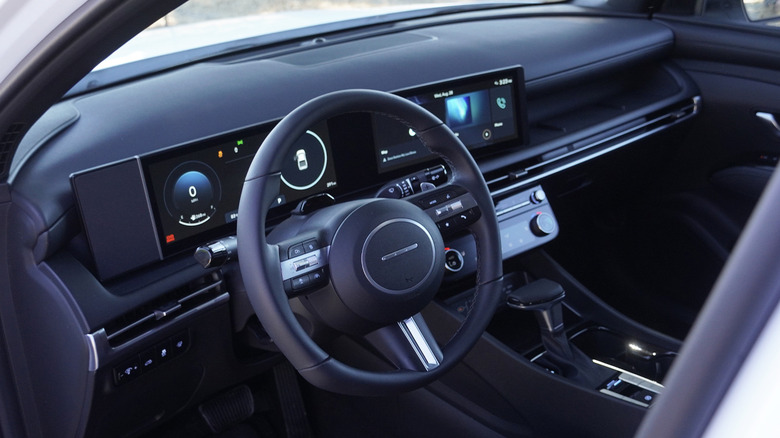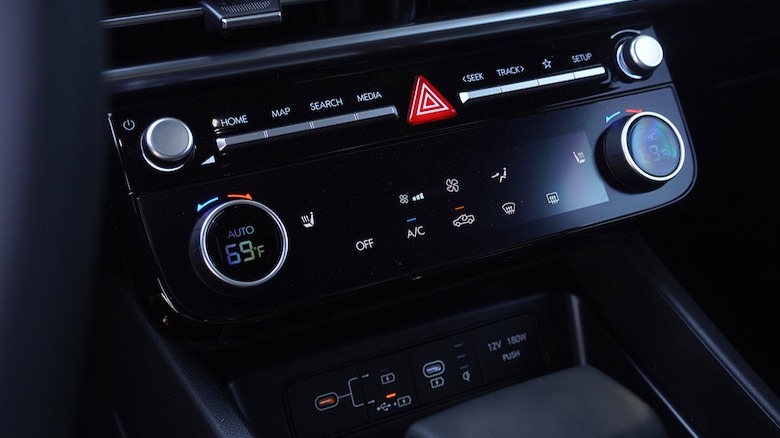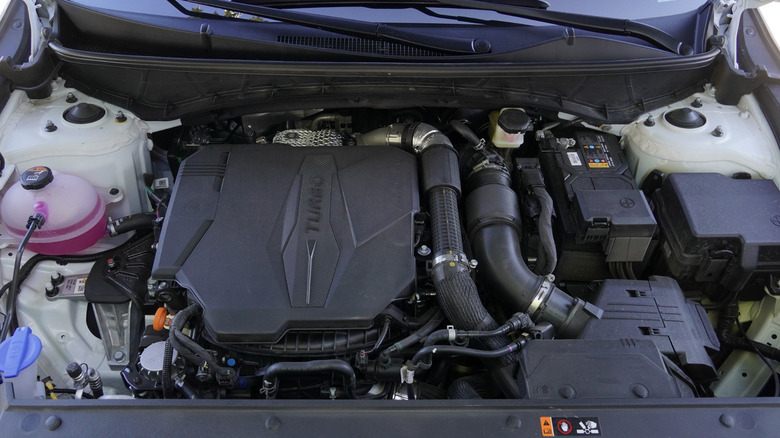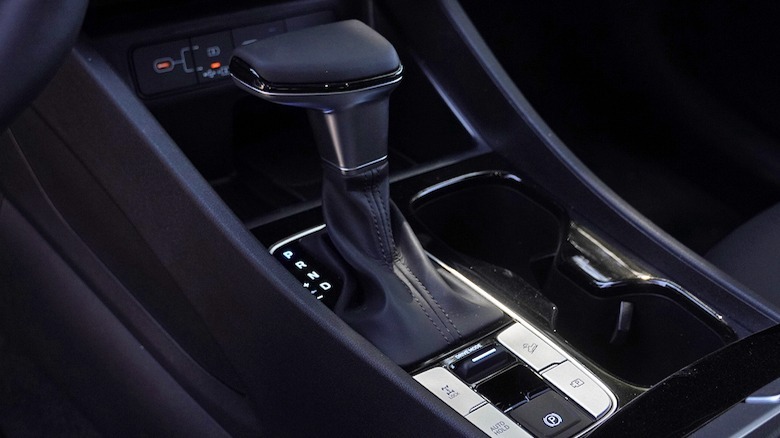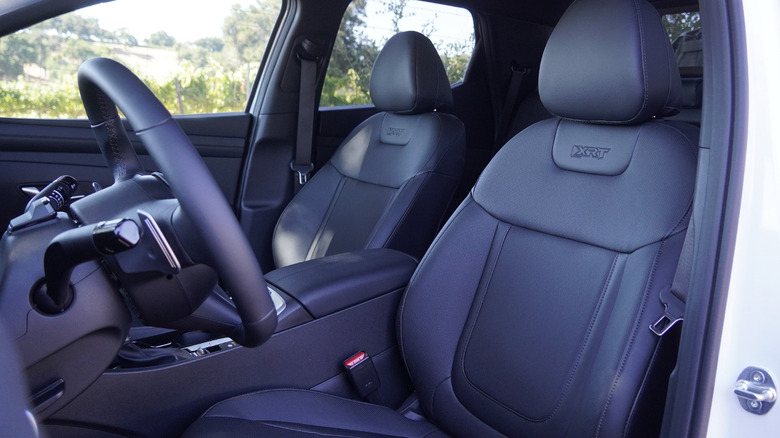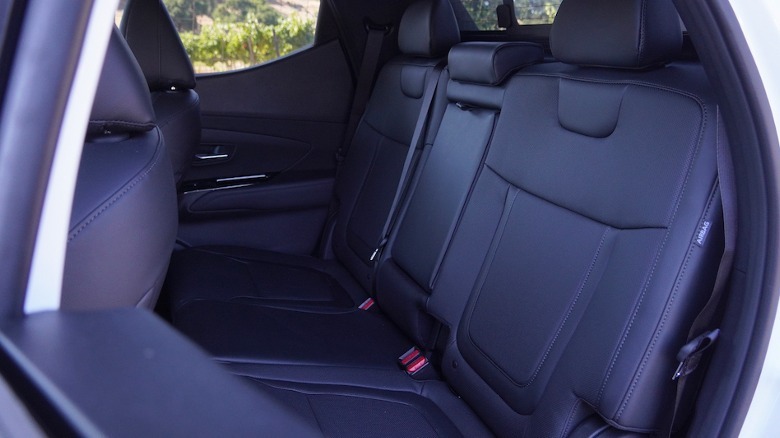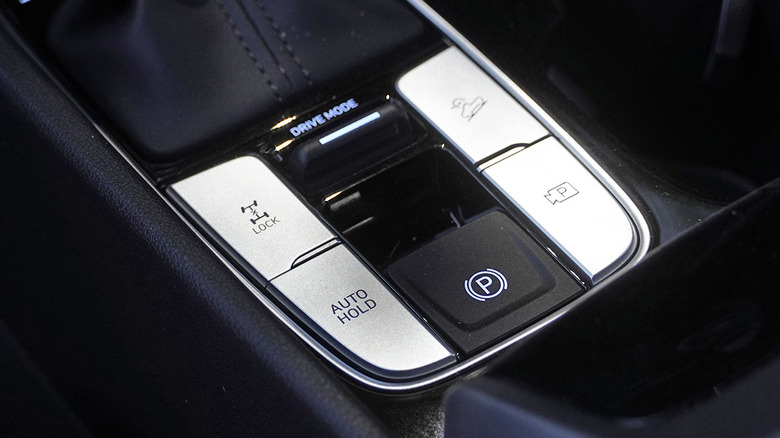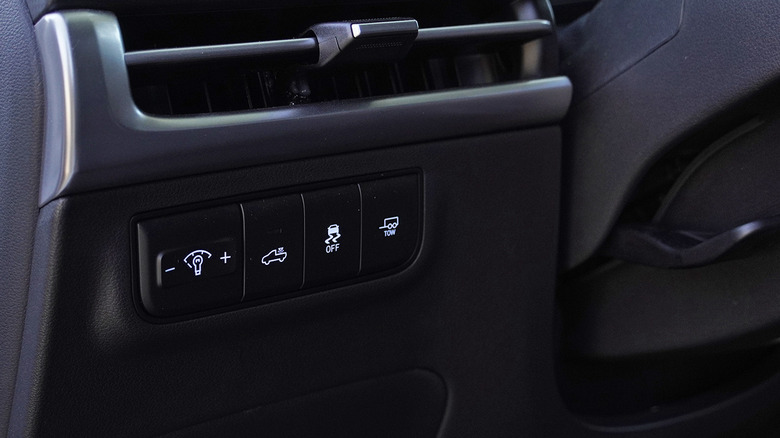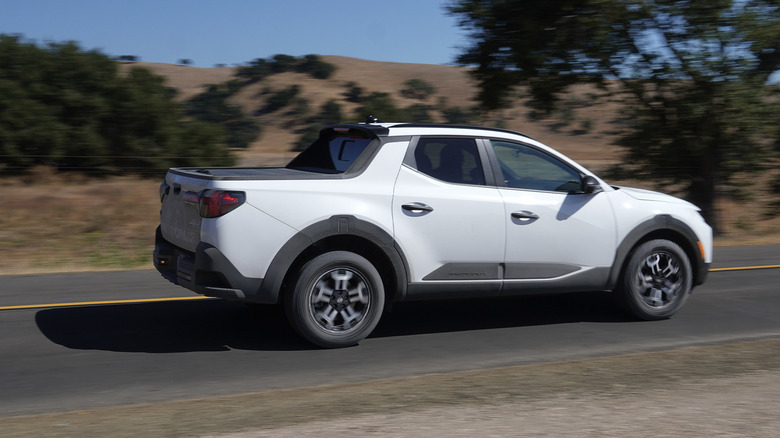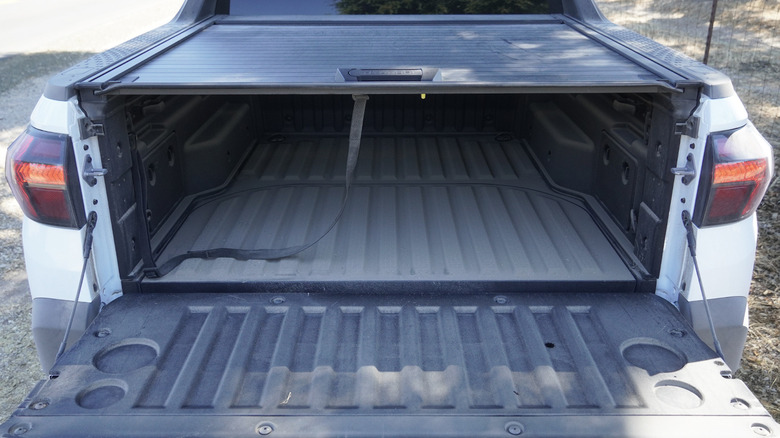2025 Hyundai Santa Cruz First Drive: Still No Hybrid, But Is The New XRT Worth It?
Ring the bells, strike up the drums, and hark the trumpets, a new Hyundai Santa Cruz rolls into town for 2025! Well, not that new actually. In fact, from afar, even the most ardent Santa Cruz acolytes might not notice the difference between the new truck and a 2024 model year example. Only up close and once inside do Hyundai's mid-cycle updates stand out most, yet America's smallest pickup truck nonetheless benefits greatly from a host of minor revisions.
In all seriousness, Hyundai has sold over 90,000 Santa Cruzes in North America since debuting the diminutive pickup for model year 2022, which makes even small changes to the truck something of a big deal. Most of the changes ride the same wave as those made to the 2025 Tucson crossover, though, since the two siblings share so many components.
So, to prove the bonafides of both entry-level options, Hyundai invited me out to blast around the blistering inland valleys of Southern California, including some light off-roading to demonstrate and validate the somewhat intimidating starting sticker for the revamped XRT package.
Minor exterior revisions for 2025
Most of the Santa Cruz lineup's exterior alterations involve transforming the front grille into something slightly more macho. The theme centers around a new design for the signature daytime running lights, which abandon the feathery features of older years in favor of a newly quadrangular layout. The rest of the grille thereunder falls into line in a much more vertical fashion, which Hyundai believes instills a more rugged identity into both the Tucson and its Santa Cruz derivative.
A more comprehensive makeover applied to the XRT package helps to up the angular ante in more practical applications, at least. The trim-specific lower front bumper pieces, in particular, do improve the measurable approach angle for the off-roader among Santa Cruzes (from 16.9 to 19.9 degrees). Red tow hooks also highlight the fact that this all-wheel-drive, unibody truck with independent suspension front and rear can therefore go anywhere and get stuck without concern. A new rear XRT bumper subtly adds more robust appeal, as do a set of new wheels and tires.
A serious interior makeover
The interior received more serious attention, if not quite as much as the Tucson simply because the Santa Cruz lineup includes no hybrid option, which means Hyundai couldn't move the gearshifter to a stalk on the steering column. But the newly horizontal dash debuts on both models, highlighted by a pair of 12.3-inch infotainment screens in the same panoramic display—and the critical addition of wireless Apple CarPlay and Android Auto. Below, a combination of physical knobs and haptic buttons for the climate controls represents a retreat back to real-world sanity that I very much appreciate, while to the right, a nice parcel shelf adds a hint of real-world utility in front of the passenger seat.
In reality, I found that retaining the physical shifter actually makes a bit more sense in a pickup truck than on the Tucson human-hauler. But the center console then sacrifices perhaps the best placement of a wireless smartphone charging pad on any model from any manufacturer yet. C'est la Santa Cruz vie, I suppose—instead, truck drivers still need to tuck a phone down in front of the shifter, just below a pair of USB-C charging ports recessed beneath the climate controls. It's not all bad, though, because at least the off-roading and drive mode buttons now live perfectly placed for selection with my right hand.
Engines, Transmissions, and Pricing
Powertrain options for the eight different Santa Cruz variants carry over from previous model years. That means the choice between a naturally aspirated 2.5-liter inline-four rated at 191 horsepower and 181 lb-ft of torque, or a turbocharged 2.5-liter inline-four that bumps output up to 281 horsepower and 311 lb-ft. The two engines use two different eight-speed automatic transmissions, however: a traditional torque converter for the former and a full-on dual-clutch with paddle shifters for the latter.
The turbo and dual-clutch only come on the Santa Cruz's top two trims, the XRT and Limited—and that's how we'll segue into the pricing discussion for not-quite-the-cheapest-pickup-in-America. Pricing for a front-wheel-drive Santa Cruz SE starts at $28,500 and tacking on all-wheel drive adds another $1,500 to 30 grand even. Climbing up the gradewalk steadily, the XRT starts at $40,000 on the dot—serious money, to my eye—and the Limited then adds another $2,500.
Luckily, the naturally aspirated 2.5-liter's transmission employs shorter gear ratios to compensate for the difference in power output versus the turbo's dual-clutch. Otherwise I might call the whole gradewalk something of a price gouge. Yet the 2.5T definitely adds more punch, plus the paddle shifters help even more to keep the peppy little mill happiest while off-roading. Because yay for tech and hooray for CarPlay, but enough of the updates, I agree this review should shift to the important part of the day. Namely, how does the XRT fare while off-roading?
Off-roader or soft-roader?
Well, first I need to reminisce for a moment about the very first time I drove a Santa Cruz, a few years ago in Northern California—though not in Santa Cruz proper, instead in the hills near Sonoma Raceway as part of an Elantra N track debut. As expected, the Santa Cruz drove more like a car or crossover than a body-on-frame truck, hence the appeal of compact unibodies. I do appreciate Hyundai's driving dynamics generally, and especially at an entry-level price point. But that day I thought the inclusion of a locking center differential seemed somewhat hilarious.
Then again, why not? Now, finally, I got to try the locking diff in a situation that maybe-sorta-almost demanded such shenanigans. Back we zoom to the present day on a ranch north of Los Olivos, complete with a Texas longhorn (bull, not college fanatic) that idly gazed (or grazed) as I drove the Santa Cruz XRT past at a slow and respectful pace. Respectful less of the demure bovine, mind you, but more to keep an eye on the PR professionals steadily disappearing in my rearview mirror.
Pushing the XRT hard
Once past a massive olive tree and up a little hill, the time to push arrived. I dropped my right hand to find the traction control button and found the locking center diff button instead. Hah, why not indeed! I flipped the drive mode into Sport, and then remembered that the traction control button instead lives to the left of the steering wheel near the door. Hold for off, please, then hammer the gas.
I had already driven a loop on the same trail in a Tucson XRT, so felt the confidence of knowing at least a little of what to expect. But the Santa Cruz's XRT package includes much more legit tires for the terrain, a set of Continental TerrainContact rubber versus the Tucson's borderline hilarious Kumho Crugen city slickers. Plus, I knew the Santa Cruz benefited from a longer wheelbase and a bit more approach angle—even though the latter would come in handy not at all.
Tires make all the difference
Instead, I tried my utmost to get sideways, even a little, just a bit, a smidge. But with the all-wheel-drive traction and semi-knobbies, on a short and technical trail without many opportunities to pick up speed—not to mention traction control still sapping power since Hyundai's programming doesn't turn the nannies fully off—the Santa Cruz simply cruised along (pun intended, as always) like a pig... on a ranch.
The most important moment probably arrived on the steepest portion of a descent, when the Santa Cruz XRT displayed zero ABS chatter where the Tucson on city slickers prattled down the hill more tentatively. Hence the value of real tires, even those that lean more heavily to occasional adventures off the beaten path. But over the course of the loop, I also noticed that the beefier tires worked in better concert with the Santa Cruz's suspension, absorbing more of the initial punishment before the shock dampers and springs then took on the rest.
Which Santa Cruz is best Santa Cruz?
Airing down, as the aforementioned PR Pros declined to have us do, might help out even more! And yet, obviously, the Santa Cruz XRT is not a serious off-roader. But I'll say confidently that it's more than a soft-roader and, with the locker, might even do alright as a winter commuter or ski slope charger (plus the tow hooks might help if I'm wrong and slide into a snow drift). Back on the asphalt, the XRT with those tires also sacrifices little in the way of daily driveability. Fuel economy drops by just one MPG for city, highway, and combined to 18, 26, and 21 respectively. But the tires never add too much road hum and the bumpers don't contribute to wind noise.
So is the XRT the best Santa Cruz? Well, the best powertrain, the best tires, and the best looks definitely do count for something. But is it the best Santa Cruz for the money? Given truck pricing these days, $40,000 is something approaching a fairly wild deal, or at least somewhat less insane of a price tag than might initially seem excessive for a tiny Hyundai unibody. And the XRT package does take the Santa Cruz beyond passive voice and into the active adventure class.
2025 Hyundai Santa Cruz verdict
I do wish Hyundai originally went with a bit more bed length than the Santa Cruz's 52.1 inches. Maybe even an extra-cab style with rear-hinged doors rather than a crew cab, given the limited legroom for those on the back bench. But the tonneau cover helps, as does up to 5,000 pounds of towing capacity when equipped with all-wheel drive and trailer brakes. Yet all-out capability and utility aren't really the point, though.
Instead, for Hyundai, the Santa Cruz occupies an entirely unique niche in the market, not truly competing with Ford's Maverick or Honda's Ridgeline (though I'd argue quite passionately for following the former's lead by offering a hybrid all-wheel-drive variant ASAP). So, for most buyers interested in a compact pickup for city life, the base SE with front-wheel drive should do the trick. And the handful of updates for 2025 do add up to help make the Santa Cruz much more appealing in the modern over-connected era.
